
 |

Having defined Am Yi•sᵊr•â•eilꞋ by the bᵊrit,![]() now Mōsh•ëhꞋ perceived é‑‑ä speaking to him to muster an army:
now Mōsh•ëhꞋ perceived é‑‑ä speaking to him to muster an army:
“Ki Ti•sâꞋ heads of Bᵊn•eiꞋ-Yi•sᵊrâ•eilꞋ, ìÄôÀ÷ËãÅéäÆí,
they shall give a ëÌÉôÆø
per nëphꞋësh to é‑‑ä áÌÇôÀ÷Éã them; so that there won’t be any plague among them áÌÇôÀ÷Éã them.
Half-shëqꞋël, 22 C.E. 2nd Temple coin (zionism-israel.com) “Here is what everyone who passes äÇôÌÀ÷ËãÄéí shall give: a half-shëqꞋël
of ha-QōꞋdësh; a half-shëqꞋël tᵊrūm•âhꞋ to é‑‑ä. Every one who passes äÇôÌÀ÷ËãÄéí, from age 20 and up, shall give the tᵊrūm•âhꞋ of é‑‑ä. The wealthy shall not increase it nor the poor decrease it from the half-shëqꞋël, to give a tᵊrūm•âhꞋ of é‑‑ä, ìÀëÇôÌÅø
for your nᵊphâsh•ōtꞋ.
“So you shall take ha-Ki•pūr•imꞋ money from Bᵊn•eiꞋ-Yi•sᵊrâ•eilꞋ and render it to the A•vōd•atꞋ ŌꞋhël Mō•eidꞋ. Thus, Bᵊn•eiꞋ-Yi•sᵊrâ•eilꞋ shall have a memorial before é‑‑ä, ìÀëÇôÌÅø for your nᵊphâsh•ōtꞋ.”
Again, Mōsh•ëhꞋ perceived é‑‑ä speaking to him:
 |
“Make a copper
ki•yōrꞋ, on a copper
base, between the ŌꞋhël Mō•eidꞋ and the Mi•zᵊbeiꞋakh, and render water there so that A•ha•rōnꞋ and his sons may wash their hands and feet from it.
“When they come to the ŌꞋhël Mō•eidꞋ or when they near the Mi•zᵊbeiꞋakh to minister (to burn an ish•ëhꞋ of qᵊtōrꞋët to é‑‑ä), they shall wash with water—so that they don’t die. Thus they shall wash their hands and feet so they don’t die. It shall be a khōq ō•lâmꞋ for them; he and his seed, for their generations.”
Recognizing the key imprint of an aroma signature on memory, Mōsh•ëhꞋ perceived é‑‑ä speaking to him:
 cBCE1850 360x220.jpg) |
| Perfume amphorae c BCE 1850 (Pyrgos, Cyprus) |
“Obtain Henbane-bitters,
Balsam-Balm of Gi•lᵊâdꞋ,
Essential Oil Of Myrrh,
Cinnamon,
Camel Grass,
and Cassia
in olive-oil, a perfume compounded by a perfumer, an oil exclusively for the Mi•shᵊkh•âhꞋ of QōꞋdësh — for the ŌꞋhël Mō•eidꞋ, the A•rōnꞋ hâ-Eid•ūtꞋ, the Shū•lᵊkh•ânꞋ with its utensils, the Mᵊnōr•âhꞋ with its utensils, the Mi•zᵊbakhꞋ ha-QᵊtōrꞋët, the Mi•zᵊbakhꞋ ha-Ōl•âhꞋ with its utensils and the Ki•yōrꞋ with its base. Thus shall you qi•deishꞋ them so that they become QōꞋdësh Qâdâsh•imꞋ. Anyone who touches them shall become QōꞋdësh You shall also mâ•shakhꞋ A•ha•rōnꞋ and his sons, qi•deishꞋ them to officiate as kō•han•imꞋ for Me.
Further, you shall speak to Bᵊn•eiꞋ-Yi•sᵊrâ•eilꞋ saying,
‘This shall be a mi•shᵊkh•âhꞋ qōꞋdësh to Me for your generations. This must not be poured on the bâ•sârꞋ of an â•dâmꞋ. Nor may you make its recipe. It is qōꞋdësh. It shall be qōꞋdësh to you. You shall excise from his am any ish who formulates a fragrance like this and renders it upon a zâr.’ ”
Then Mōsh•ëhꞋ perceived é‑‑ä speaking to him:
 |
| incense stick |
“Compound a qᵊtōrꞋët from equal amounts of the following spices:

gum-resin from the stem of the Galbanum bush
compounded with
clarified gum-resin obtained from the trunk of the Frankincense tree;
a perfume compounded by a perfumer and mixed with salt, pure and qōꞋdësh.
Pulverize it into a powder and compact it into incense. Then render it before ha-Eid•ūtꞋ in the ŌꞋhël Mō•eidꞋ where I shall meet convene you. It shall be a QōꞋdësh Qâdâsh•imꞋ. And the qᵊtōrꞋët that you shall make, by this formulation, you may not make for yourselves. It shall be your qōꞋdësh thing for é‑‑ä. Any man who makes this incense to smell it shall be kâ•reitꞋ from his am.”
The Mōsh•ëhꞋ perceived é‑‑ä saying,
 |
| Shab•âtꞋ Collage |
“Speak to Bᵊn•eiꞋ-Yi•sᵊrâ•eilꞋ saying,
“‘But you
shall watchguard My ùÑÇáÌÈúåÒú, because it is a sign between Me and you
to your
generations: to know that I am é‑‑ä Who makes you
qōꞋdësh. You
shall watchguard Sha•bâtꞋ, because it is qōꞋdësh to you.
Profaners of it shall absolutely die, because whomever does mᵊlâkh•âhꞋ during it, his nëphꞋësh shall be kâ•reitꞋ from amidst his am.
The six days of mᵊlâkh•âhꞋ shall he be done.
But the duration of the seventh day is the Sha•bâtꞋ Sha•bât•ōnꞋ qōꞋdësh of é‑‑ä. Anyone who does mᵊlâkh•âhꞋ on the day of Sha•bâtꞋ shall absolutely die.
So Bᵊn•eiꞋ-Yi•sᵊrâ•eilꞋ shall watchguard Sha•bâtꞋ, to do Sha•bâtꞋ for their
generations—a bᵊrit ō•lâmꞋ between Me and Bᵊn•eiꞋ-Yi•sᵊrâ•eilꞋ. It is a sign lᵊ-o•lâmꞋ because é‑‑ä was six days making ha-shâ•maꞋyim and hâ-ârꞋëtz, and the duration of the seventh day He sha•vâtꞋ and nâ•phashꞋ.’”

Optional parental preparation:
What does archetypal mean?
That is a nëphꞋësh?
What is copper? Bronze? How is copper made into bronze?
What is a legislation? What’s the difference between a legislative branch of gov’t, a judicial branch of gov’t and an executive branch of gov’t?
What is an “aroma signature” and what is the effect of aromas imprinting on memories (e.g., grandma’s cookies)? What is cologne? Weeks in advance, order a package of “Frankincense & Myrhh” incense sticks to (light before candles) burn on Sha•bâtꞋ & Khaj•imꞋ
Note that blood is not required for ki•pūrꞋ. ![]()
![]()
Half of a 20 âÌÅøÈä shëqꞋël (i.e. ≈5½ g. or 0.2 oz. of silver; almost US $3 in 2019). ![]()
![]()
30.23 áÌÀùÒÈîÄéí (Commiphora gileadensis), Balsam-Balm of Gi•lᵊâdꞋ, balsam; — source of an aromatic and usually oily and resinous exudate containing benzoic or cinnamic acid; used to treat minor skin irritations.
Although in MH![]() this hapax legomenon in Ta•na"khꞋ is understood to mean “spice(s)”, drugs, narcotics or pharmaceuticals—especially spices used for Ha•vᵊdâl•âhꞋ, both Klein
this hapax legomenon in Ta•na"khꞋ is understood to mean “spice(s)”, drugs, narcotics or pharmaceuticals—especially spices used for Ha•vᵊdâl•âhꞋ, both Klein![]() and Zohary
and Zohary![]() trace this term, via the Arabic “basham” or “balasam or balsham” (Balsamodendron Opolbalsamum), respectively, rendered in Greek as balsamon, to balsam.
trace this term, via the Arabic “basham” or “balasam or balsham” (Balsamodendron Opolbalsamum), respectively, rendered in Greek as balsamon, to balsam.
Zohary further noted that the taxonomical classification of Balsamodendron Opolbalsamum was later superseded in the literature by Commiphora gileadensis.
NH:![]() “cassia” is conjecture lacking sound basis.
“cassia” is conjecture lacking sound basis. ![]()
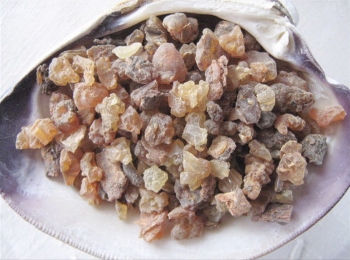 |
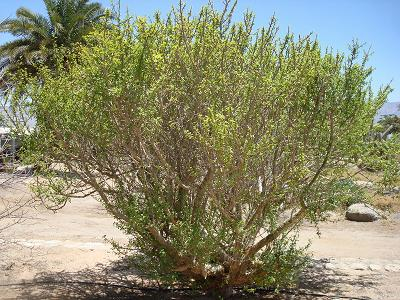 |
| áÌÒùÑÆí (Commiphora gileadensis; formerly Balsamodendron opobalsamum) Balsam-Balm of Gi•lᵊâdꞋ bush |
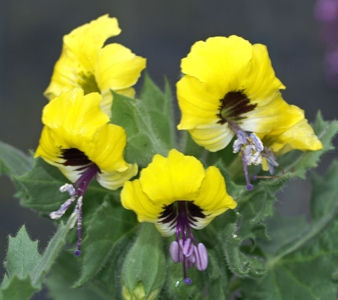 |
| øÉàùÑ (This is a noun, not an adjective.) — Henbane-bitters (Hyoscyamus aureus); psychotropic-narcotic, entheogenic bitter used in religious rituals; popularly “gall” |
A fortiori, the lavendar reniform (bean-shaped) anthers at the ends of the filaments somewhat resemble a miniature cluster of grapes (cf. Dᵊvâr•imꞋ 32.32-33).
Each of these instances—as well as The Nᵊtzârim Reconstruction of Hebrew Matitᵊyâhu![]() 27.33 &34—corroborate not “gall” but “bitters” — specifically, Henbane-bitters (Hyoscyamus aureus).
27.33 &34—corroborate not “gall” but “bitters” — specifically, Henbane-bitters (Hyoscyamus aureus). ![]()
![]()
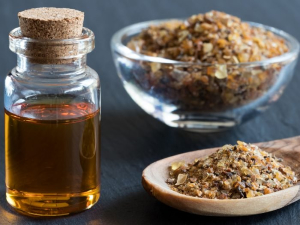 |
 350x263.jpg) |
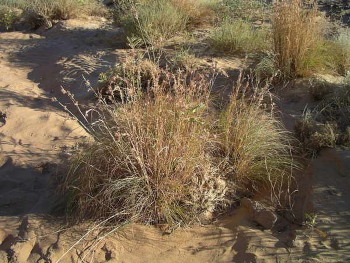 |
”The age-old usage of these plants is attested by the fact that when the tombs of the Pharaohs of the 20th and 21st dynasties were opened in Egypt in 1881 – some 3,000 years after burial – the pleasant odor of C. schoenanthus, among others, was still perceptible (Schweinfurth, 1884). ![]()
![]()
![]()
 |
Ceylon Cinnamon, i.e.True Cinnamon, contains only 0.017 g/kg of courin while Cassia Cinnamon contains 0.31 g/kg.![]()
The recommended daily courin limit is approximately 0.05 mg/pound (0.1 mg/kg) of body weight, or 5 mg per day for a 130-pound (60-kg) person. This means that a person would have to consume 1-1½ teaspoons of Cassia cinnamon to exceed the daily limit.![]() So it’s not considered a serious health hazard. Still…
So it’s not considered a serious health hazard. Still… ![]()
![]()
 khelbenah galbanum 0350x263.jpg) |
30.34 ìÀáåÉðÈä (Boswellia sacra) Frankincense — ranging in size from a medium-sized shrub to small tree. “With other costly commodities, frankincense was imported into the Land of Israel by the Phoenicians [i.e. Lebanese] via the famous spice route across southern Arabia and some of the littoral stations of East Africa, a caravan highway also used for imports from India and farther east… The drops [of oleoresin] are shiny, yellowish or reddish, highly aromatic and bitter”![]()
![]()
 0350x263.jpg) |
 |
30.32-33, 37-38 — Prohibition, upon penalty of kâ•reitꞋ, for compounding the anointing oil or incense formulas.
In His Infinite Wisdom, é‑‑ä led Mōsh•ëhꞋ to design several features that would later enable é‑‑ä to deftly and cleanly wean Bᵊn•eiꞋ-Yi•sᵊrâ•eilꞋ from the anthropomorphisms of a sacrifice system.
Like confining the act of sacrificing to the kō•han•imꞋ, and confining the location of sacrifice to the Beit ha-Mi•qᵊdâshꞋ in Yᵊru•shâ•laꞋyim, confining the anointing oil formula and incense formula to the kō•han•imꞋ and Beit ha-Mi•qᵊdâshꞋ served to enable the complete weaning of Yi•sᵊr•â•eilꞋ from the anthropomorphisms of sacrifices simply by allowing the destruction, by the Hellenist Romans, of the Beit ha-Mi•qᵊdâshꞋ — and, immediately thereafter, the destruction, by succeeding Christian generations of Hellenist Romans, also of the yō•khas•inꞋ required to establish the legitimacy of any kō•heinꞋ. With no Beit ha-Mi•qᵊdâshꞋ sacrificing was automatically prohibited.
With no kō•han•imꞋ to officiate, sacrificing was further impossible. With their yō•khas•inꞋ destroyed, Ha•lâkh•âhꞋ forever dictates![]() that there can never again be any legitimate kō•heinꞋ. Ergo, neither a “Temple” domiciliating an anthropomorphic idol-
that there can never again be any legitimate kō•heinꞋ. Ergo, neither a “Temple” domiciliating an anthropomorphic idol-god, nor a sacrifice system with its anthropomorphisms can never again defile Bᵊn•eiꞋ-Yi•sᵊrâ•eilꞋ. This also means that the next phase is the Beit Tᵊphil•âhꞋ of Yᵊsha•yâhꞋu,![]() when rabbis will go extinct
when rabbis will go extinct![]() because every Jew—and Jewess—discovers how they can better derive, for themselves, more historically authentic Ha•lâkh•âhꞋ directly from internet databases, as é‑‑ä pours out His RuꞋakh ha-QoꞋdësh on all mankind.
because every Jew—and Jewess—discovers how they can better derive, for themselves, more historically authentic Ha•lâkh•âhꞋ directly from internet databases, as é‑‑ä pours out His RuꞋakh ha-QoꞋdësh on all mankind.![]()
Compounding this exact anointing oil formula (not other, or similar, anointing oil formulas) and pouring it upon an â•dâmꞋ,![]() or compounding the incense formula for any prayer or worship other than as prescribed in Ta•na"khꞋ,
or compounding the incense formula for any prayer or worship other than as prescribed in Ta•na"khꞋ,![]() is prohibited under penalty of kâ•reitꞋ “for all of your
is prohibited under penalty of kâ•reitꞋ “for all of your![]() generations”. If “all generations” were meant, then this could not have gone extinct with the destruction of the Beit ha-Mi•qᵊdâshꞋ and yō•khas•inꞋ. Since these have gone extinct, however, a priori it’s absolutely clear that this referred—as explicitly stated—”for all of your generations”. Mōsh•ëhꞋ could only have referred, exclusively, to the generations of his brother and nephews—yō•khas•inꞋ-authenticated kō•han•imꞋ—who, indeed, went extinct. Ergo, from the moment the kō•han•imꞋ went extinct, there remained no one for whom this prohibition could remain in force. Ergo, today, even if it were correctly and precisely reformulated, it would be no more than an historical or archeological artifact.
generations”. If “all generations” were meant, then this could not have gone extinct with the destruction of the Beit ha-Mi•qᵊdâshꞋ and yō•khas•inꞋ. Since these have gone extinct, however, a priori it’s absolutely clear that this referred—as explicitly stated—”for all of your generations”. Mōsh•ëhꞋ could only have referred, exclusively, to the generations of his brother and nephews—yō•khas•inꞋ-authenticated kō•han•imꞋ—who, indeed, went extinct. Ergo, from the moment the kō•han•imꞋ went extinct, there remained no one for whom this prohibition could remain in force. Ergo, today, even if it were correctly and precisely reformulated, it would be no more than an historical or archeological artifact. ![]()
![]()
Questions you might anticipate that your child might raise and be prepared to discuss:
What is a military? What does “muster” mean?
What is a plague (epidemic)?
What does profane (v. & n.) mean?
What does watchguard mean (better to use shō•meirꞋ)?
![]()
 |
 |